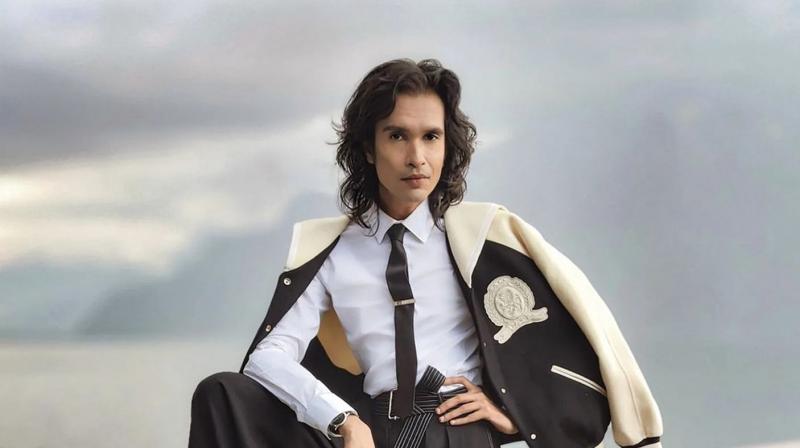Kaustav Dey, vice president – marketing, Tommy Hilfiger, Calvin Klein and Arrow India, talks about different methods of reaching out to the luxury customer, how the Disha Patani-CK partnership has helped the brand, Arrow's mass appeal, and more.
You have got different types of brands under your portfolio. The target audience for Calvin Klein would be very different compared to Arrow. So how do you look to capture the audience’s attention?
I also oversee some aspects of marketing, especially the brand ambassadorships of US Polo. We work with the likes of Milind Soman and Arjun Rampal across brands. Essentially, the idea remains the same. We want to sell a dream to the consumer. To the Calvin Klein consumer, we will market it a little less because in luxury (marketing) we hold back a little bit. I don’t want to inundate the customer with a lot of information. We also work with very selective people – one of them in India is Disha Patani. She’s been doing some iconic campaigns with us for the last six to seven years. I still pinch myself every time I see her images, she’s so stunning, and brand recall hasn’t been an issue at all.
We try curating content across brands that stay true to the brand ideologies. With the more premium brands, we do less but with higher production value. We space out communication in a way that the customer is delighted.
For the other brands, like Arrow, the push is more. The idea is to change the way the modern gentleman dresses in India. So we put up a lot of information on how to dress, how to pair pieces of clothing etc. We have Hrithik Roshan as brand ambassador for Arrow and create a lot of content with him talking about his style. It’s more of a conversation for the consumer.
You mention the associations – while there’s no doubt about the CK-Disha Patani one, do you think the consumer could look through Arrow’s with Hrithik Roshan? Given his preferences, Arrow may not be his go-to brand when he’s at gatherings and the TG could label this as a less authentic partnership?
We started with Hrithik in 2020, just before the pandemic hit. We wanted to move the brand away from shooting with models who were not of Indian origin. We had global imagery, but we saw that a lot of competing brands were doing the same thing and trying to highlight the foreignness of the brand. We wanted to get someone who was aspirational to the modern gentleman in India and who was relatable.
To add to this, Hrithik does kindly wear Arrow as well in his day-to-day life. But I do agree with what you’re saying and there needs to be an evolution of the brand, which we’re looking at. We are looking at complementing our stunning brand ambassadors with pillars of commerce, attainability, and accessibility.
Each brand would have a different media-split too. Could you shed some light on that? I’d assume digital has a big role to play, but we’re seeing the re-emergence of print too…
I love print. We do the whole gamut. We do a 50% split of digital versus traditional media now. Slowly, the digital pie has been increasing but print remains strong for us. The publications are evolving and my investment towards them has remained the same. Traditional print advertising is not as much as we used to, but there are other ways to leverage the medium.
Coming to the difference between the luxury versus the more mass brands, for the latter I carpet a city with out-of-home. For Calvin Klein, I’ll pull back and do large dominating spaces in perhaps the best airports of India, where my high-net-worth customers are going in and out. I don’t want to be seen too much, but I want to be seen in a dominating space in a super-premium environment.
Would luxury retail malls be growth opportunities then?
Yes, and we only occupy marquee positions for both Tommy Hilfiger and Calvin Klein. We’re always on the ground floor, always close to the entry and we move with muscle. We are very proud of who we are and what we have built in India.
Tommy Hilfiger’s perception is somewhere in the middle in India. Also, do you have to battle the ‘Oprah Winfrey rumour’ where he was accused of racism and not wanting to reach out to the Indian consumer?
It’s a deliberate move to place the brand somewhere in the middle. Mr Hilfiger thinks it’s a win-win. Coming to the statement, I’m not the right person to address it. I’d label that an urban myth as I know he loves India.
The challenges that you see in the luxury fashion space and how different are they?
I think there are two challenges. In the offline space, our infrastructure has evolved to a great extent but has a long way to go. The momentum is building right now, but for brands like Tommy Hilfiger and Calvin Klein that have deep penetration across the country, if I’m looking to expand in my big markets, I’ve hit saturation. It’s great because I can go to developing markets in India, but there could be more growth in the developed cities too.
Secondly, for us as marketers, we need to change the way we think. The buzzword is ‘Gen Z’. I work with a young team, and the way they think, the way they consume media, and their attention spans, are entirely different from ours. We have to find a way to catch that zeitgeist and take the heritage, the luxury, the dream building and put it into the TikToks, Reels format etc. From a global point-of-view, TikTok is far bigger for the fashion industry compared to Instagram. The 30 seconds that you’re taking away from the consumer, has to be beautiful and transformative into the world of luxury.
This feature first appeared in the April edition of Manifest.












